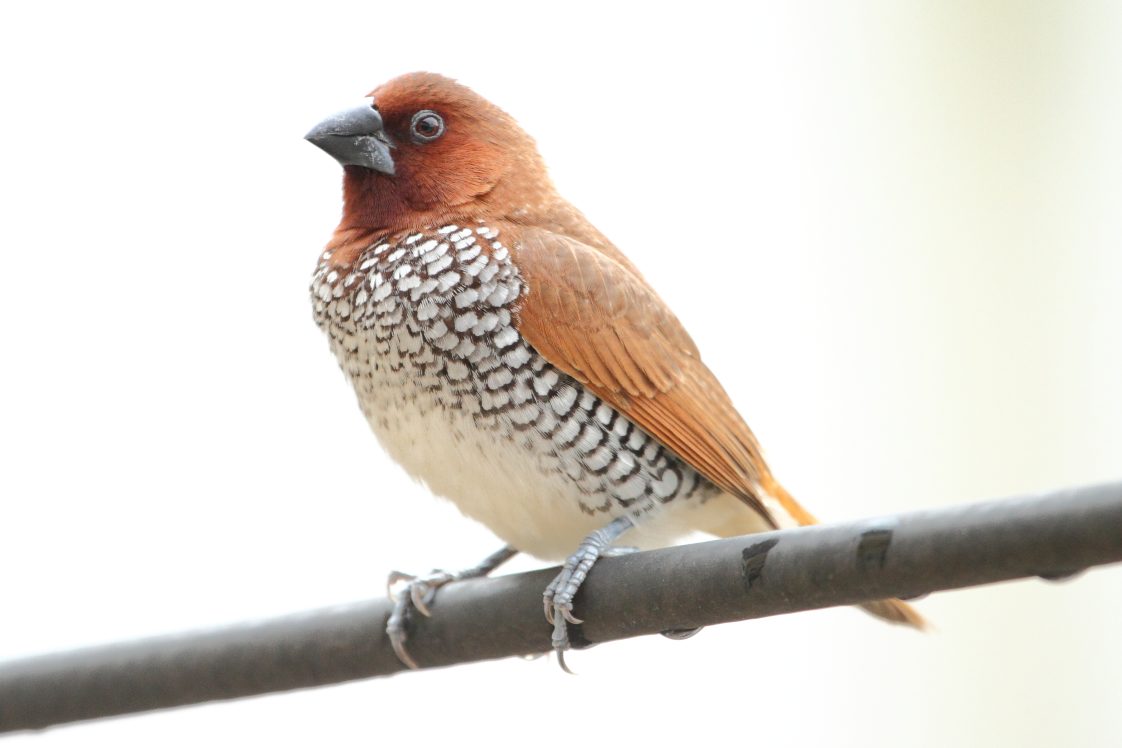Forestry & Wildlife

While lesser known than other detrimental invasive species—such as feral hogs, kudzu, and cogongrass—there are a number of invasive or introduced bird species in Alabama as well. Starlings, house sparrows, feral pigeons, and collared doves have been present in the United States and Alabama for many decades or even well over a century in some cases. However, in the past 15 years, the scaly-breasted munia (Lonchura punctulata) has established itself in Mobile and Baldwin Counties.
Also known as the spice finch or nutmeg mannikin, this species has been present in parts of Florida and southern California for several decades. While originally descending from escaped or released pet birds, the scaly-breasted munia population in Alabama spread from an established population in the Pensacola, Florida area in the late ’90s.
Causing Problems
For such a small and endearing bird, the scaly-breasted munia has the potential to cause a variety of issues. The species can breed rapidly, with populations in Alabama known to lay seven to eight eggs at one time. They have been known to readily utilize the nesting habitat of desirable native birds—such as purple martins. They will also use invasive plants, such as cogongrass and pampas grass, for nesting and feeding, potentially further spreading those species.
Another potential issue is the large size of the flocks they may travel in. Flocks of several dozen are often present at wild food sources, and even greater numbers congregate around bird feeders. Such large and condensed groups may easily compete with native birds for food sources, quickly empty feeders and birdbaths, and risk spreading disease to native species.
Identification

Scaly-breasted munia with chicks.
Thankfully, the scaly-breasted munia is readily distinguished from most native Alabama birds.
Size. They are visibly smaller than most other sparrow- or finch-like birds in Alabama, at approximately 4.5 inches long and barely 0.5 ounces in weight.
Coloration. No other bird of the same size has comparable coloration. Adults have a dark, chocolate-brown head, back, wings, and tail. The breast is white, with each feather having a black rim. This creates the scaly effect that gives the bird its name. Juveniles are uniformly a paler tan coloration, with the same dark bill as the adults have.
Nest design. As an Estrildid finch, the scaly-breasted munia is a skilled nest weaver, usually making an easily recognizable dome nest. The nests are round and have a small entrance angled down and to the side of the nest. This is most easily visible with nests woven into the branches of a tree or tall grass. However, they may also be found in nesting boxes intended for other birds.
Action Steps
- Do not release pets into the wild, especially non-native species.
- Report sightings of this species on EDDmap, iNaturalist, or eBird.
- If large flocks of this species are congregating around bird feeders, pull the feeders to avoid supporting a potential invasive species.
- If these birds are confirmed to be nesting in purple martin houses or other similar structures, limit reproduction by removing the nests as they are built.

